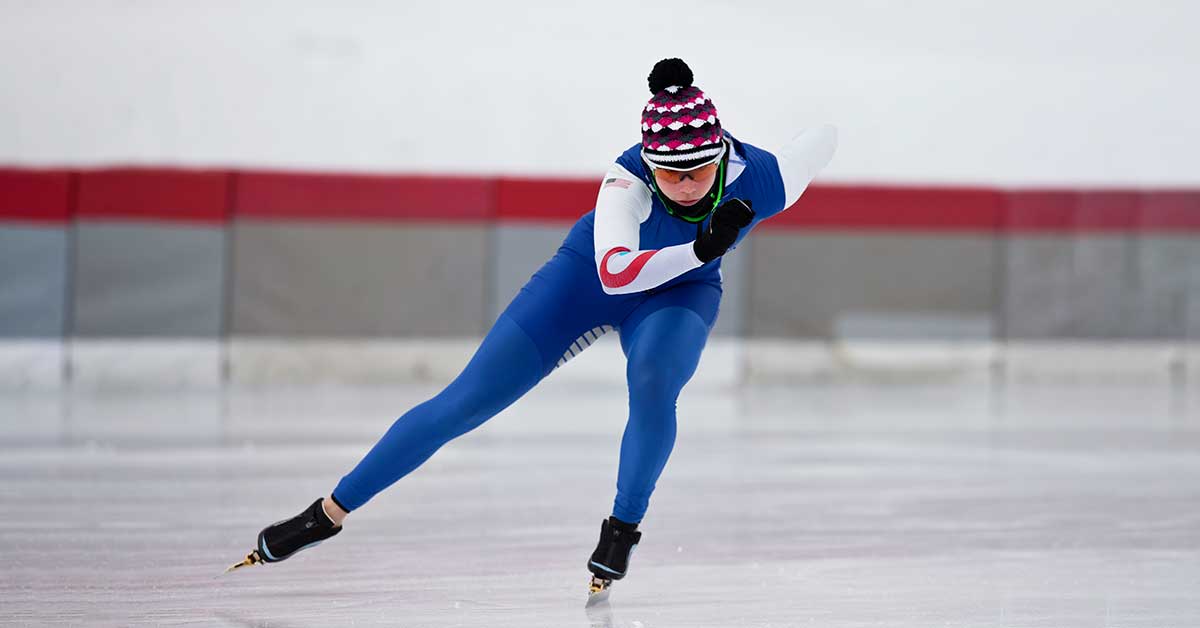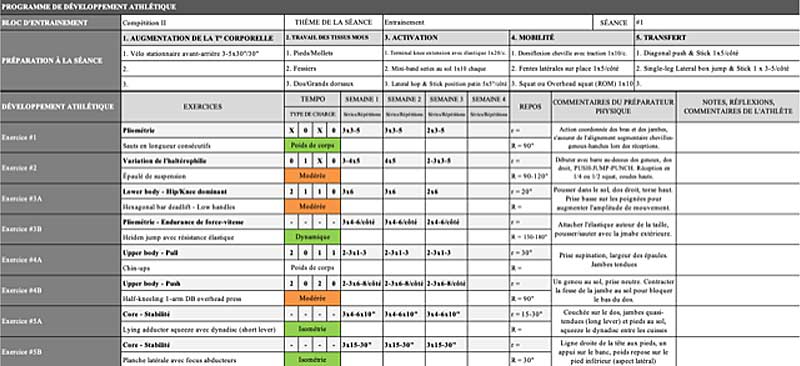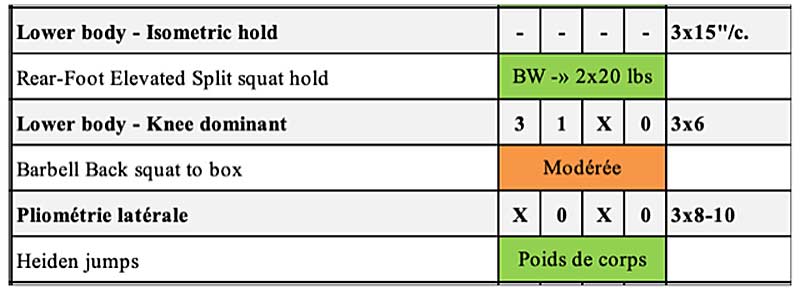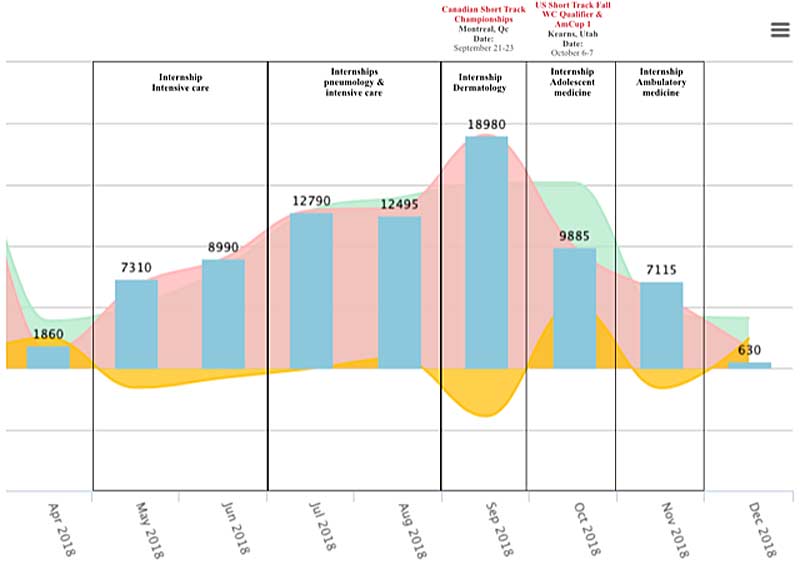
For athletes, achieving excellence requires not only talent, passion, and determination, but also an incredible amount of dedicated work. I’m sure you’re now quite familiar with the saying that it takes 10,000 hours for experts from many diverse fields to reach mastery. Even though this concept is not without its flaws, it reflects the reality that making it to the top requires an important time investment to develop the skills and physiological and biomechanical adaptations necessary for performance.
When working with young student-athletes, however, it’s necessary to consider not only the demands of training and competition but also academic and other commitments including exams, internships, and part-time jobs that are linked to this stage of their personal journey. Simply put, student-athletes need to excel both in sport and the classroom.
For the past 18 months, I’ve been fortunate to work with two female student-athletes who are full-time medical school students. One is completing her residency in pediatrics while competing as a short track speed skater. This article provides coaches a detailed look at some of the programming strategies we’ve used during her off-ice physical preparation, training she’s undertaken while also meeting requirements to complete on-ice skating sessions, different internships, and rotating work shifts during her residency. I’ll share some aspects of a coach’s decision-making process and thus stimulate further discussion about current practices.
Task Analysis of Short Track Speed Skating
Coming from a Canadian football background, I had little knowledge of short track speed skating when I was put in touch with this student-athlete. When an athletic development coach starts working with a sport they know very little about, their first step is to perform a thorough analysis of the physical and technical demands related to that sport.
My analysis started by sitting down and asking the athlete numerous questions about the sport and her performance. This gave me valuable information about her background regarding training and injury as well as insight into her strengths and weaknesses. As an example, she is relatively small in stature, which increases demands on her stability when she tries to position herself in the group and hold her position during races.
Short track speed skating consists of races over three distances with separate requirements and target time ranges for female competitors:
- 500 meter, with a race duration of 43-46 seconds
- 1000 meter, typically completed between 90-100 seconds
- 1500 meter, finishing between 143-155 seconds
In reviewing the literature, I learned that from a tactical perspective, a fast start strategy seems optimal for the 500m event, while the crucial portion of the 1000m is from the 6th lap to the finish line.5 Emphasizing the start for the 500m race is crucial, as there are limited opportunities to pass an opponent during the race. For the 1500m, while a fast start strategy may lead to faster times, top skaters are faster during the last five laps. Therefore we emphasize pacing strategies and tactical decisions during the latter phase of the race.4
From a physical and physiological perspective, the 500m shares similarities with the 400m in track and field regarding both within-race strategy and energy demands.2 Although, as the event’s duration increases, the crouched position adopted by the skaters puts them at a physiological disadvantage, as it may increase muscle deoxygenation due to static occlusion of blood flow in the leg muscles.3
The #TaskAnalysis helped us identify her main strength and the main area she needed to improve, says @xrperformance. Share on XThe task analysis and discussion enabled us to identify her main strength—her start—and the main area that needed improvement—endurance and capacity to resist fatigue in the late portion of the race.
Programming Strategies During the 2017-2018 Season
Following the initial task analysis and discussion, we performed a modified version of Kelvin Giles’ Physical Competence Assessment (PCA) to assist establishing her training age and “trainability” across a wide range of movements, including the overhead squat, single-leg squat, and side plank for time. We also did flexibility tests like the Thomas test and ankle dorsiflexion.
The initial assessment would progress over time to include more single-leg jumping movements to challenge her current athleticism. More importantly, it served as our starting point for her resistance training program. For programming, we adopted a progressive approach over the 2017 summer since we had close to 20 weeks to get her ready for the national qualifier in November.
Most training weeks consisted of two or three resistance training sessions, plus on-ice practices with her club. For the first three mesocycles, we used a simplified version of Joe Kenn’s Tier System in which we rotated total body, lower body, and upper body movements on a daily basis. At this point in her annual training plan, she had time in her schedule to complete all three training sessions during the week.
Day 1
- Plyometrics
- Total body exercise—Olympic lifting variation
- Lower body exercise—front squat progression
- Upper body pulling exercise
Day 2
- Plyometrics
- Lower body exercise—hexagonal bar deadlift
- Upper body pushing exercise
- Total body exercise—Olympic lifting variation using dumbbells or kettlebells
Day 3
- Plyometrics
- Upper body pulling exercise
- Total body exercise—jump shrug variation
- Lower body exercise—front squat progression
To focus on her start, most training days included compound multi-joint movements such as jumps (box jumps, Heiden jumps, and hurdle jump progressions), Olympic lifting variations (barbell high pulls from various starting positions), lower body exercises such as squats and hexagonal bar deadlifts, and upper body pulling and pressing movements. Accessory exercises such as lunges, step-ups, and core work completed the training sessions.
During the summer, she learned she was accepted to another university and would have to relocate to Montreal. This good news impacted our programming to some degree since she would be working at the hospital more regularly.
On certain occasions, for example, she was required to be “on call” and available for emergencies at the hospital or spend a full weekend at the hospital. This made it impossible for her to perform any training sessions we had planned during that weekend. I’ll examine a more detailed portrait of the commitments associated with such a schedule in the third part of this article.
As we got closer to the start of the 2017-2018 competition season, we started reducing the number of training sessions which involved her going to the gym. Moreover, we wanted to include exercises and methods that would somehow target her strength-endurance and power-endurance qualities while also increasing her work capacity.
For these reasons, we introduced various bodyweight and dumbbell circuits on the second or third day of training, depending on the number of training sessions in a week. With her access to dumbbells at home, we used different variations of Vern Gambetta’s dumbbell (DB) complex and lower body complexes before introducing Vern’s leg circuit. The DB complexes were comprised of four different exercises completed one after the other using 20-30% of her total body weight.

As for the leg circuit, we wanted to establish a base of strength and power endurance.1 The exercises included different variations of squats, lunges, step-ups, and jumps at a tempo of one repetition per second. We started by using the half leg circuit (35 repetitions in total) for 3 to 5 sets with 1 minute of rest between sets. Then we progressed to no rest between sets before moving to the full leg version (70 repetitions) following a similar pattern of rest intervals.

During the 2017 competition season, we didn’t move away much from what we did during the preparation period. With most training time dedicated to on-ice practice sessions, we agreed to plan for one gym-based training session per week if possible. Otherwise, she could complete the circuit-based training session that required limited equipment.

In summary, during the 2017-2018 season, we followed a progressive and sequential training program. First, we emphasized improvements in general strength and power qualities and then progressed to include more circuit-based programming strategies while providing training sessions she could do at home.
Programming Strategies During the 2018-2019 Season
After taking the month of April off from dedicated training, we approached her preparation for the 2018-2019 season from a different perspective. Indeed, her coaches on the national team told her that her physical qualities were no longer a limitation in her on-ice performance.
Her physical qualities no longer limited her on-ice performance, says @xrperformance. Share on XDuring May and June, one of her major obstacles was limited on-ice training time because of school compared to the other athletes in her club. During those two months, she interned in the intensive care unit, working 17 shifts per month and starting her day by 7:00 am and leaving the hospital between 8:00-9:00 pm. During this time, the other athletes at her club would complete an average of six on-ice training sessions per week on weeknights.
Because she lacked the energy to do the on-ice sessions, she either completed a short training session at home after work or went for a light jog. During her off-days, when she could have been resting, she often completed one or two daily training sessions on back to back days.
Not exactly the ideal scenario, and it meant training with suboptimal readiness. She would often complete a resistance training session at the gym and run back home as her conditioning. During this time in her on-ice training sessions, she would often hit a wall and feelings of heavy legs would appear after only a few laps. The intense internship period was starting to take its toll, and we had to find a solution to help her accumulate more training volume.
An intense internship was taking its toll and we had to help her accumulate more training volume, says @xrperformance. Share on XDuring July and August, we re-introduced DB complexes and leg circuits to her training program on the second day of training. We also started introducing more intense lower body complexes during her gym-based training session to replicate some of the sensations she experiences during a race, especially during the 1000m and 1500m races.
She completed these complexes after performing a plyometric and an Olympic weightlifting variation and involved three types of muscle contractions or speeds of movement:
- Dynamic
- Isometric
- Explosive
For example, she would hold a position for a certain time, then perform a squatting variation followed by a type of jump. The different parameters of the complex (exercise order, types of exercises, rest intervals, time under tension, etc.) were manipulated based on the objectives we wanted to achieve.
We put this strategy in place because, by then, she was then interning in pneumology and her more normal work schedule (9:00 am to 4:00 pm) allowed her to complete more training sessions both on the ice with another club (because her club was training in the morning at that time) and off the ice.
During August, for example, even though she was completing another internship in intensive care, her work schedule allowed her to skate in the morning, train in the early afternoon, and take a nap before going to work (8-hour shifts, from 4:00-6:00 pm to 12:00-02:00 am). This was nowhere near the hectic schedule she was working earlier during the summer.

To address her conditioning, we talked to our local speed skating club’s strength and conditioning coach here in Sherbrooke who suggested we add a stationary bike to her training. We added low box quick steps in a HIIT format on Day 1 and short intervals on the stationary bike on Day 3.
Over the following weeks, we progressed the low box quick steps from 15 to 30 seconds using a work-to-rest ratio of 1:1. For the bike intervals, we started with two sets of 5-6 intervals of 15 seconds with 45 seconds of recovery and progressed to 30-60 seconds of work with a 1:3 work-to-rest ratio and finally sets of 1 minute with a 1:2-3 work-to-rest ratio.

As we got closer to the start of the 2018-2019 season in September, she was able to complete most on-ice training sessions with her club after her daytime internship in dermatology. She performed the prescribed resistance training session before her on-ice training. If she needed to, she would modify the volume of the program to make sure she could complete the on-ice work prescribed by her coach and respect the training theme for the day. She was able to make modifications because she has a very good understanding of her body and the type of training she needs to perform at this level of competition.
The following graph illustrates her training loads collected using the Session-RPE method and an online monitoring tool as she completed her various internships leading up to the national qualifiers in Montreal and the US Short Track Fall WC Qualifier & AmCup 1 in Utah. The graph provides a nice overview of the challenging demands she faced over the months and how we managed her training accordingly.

Key Takeaways
My main objective for this article was to share the coaching decisions I’ve made in the past 18 months to help and support a young medical school student-athlete reach her goal of making the Canadian Top-20 in short track speed skating.
When working with athletes who perform at a very competitive level while also balancing high-level work or study demands that are time-consuming and stressful, it’s imperative that your training is very time-efficient and centered around what you consider to be the best “bang for your buck” training exercises, strategies, and interventions.
It’s also important to remain flexible when planning the different training sessions and training cycles. Work commitments such as night shifts at the hospital for multiple nights will have a huge impact on an athlete’s energy levels and, thus, motivation to go to the gym.
It’s often best to acknowledge these realities, find different ways in concert with the student-athlete to adapt their training, and look at key moments in their agenda where they can dedicate more time and energy to training. Although many young student-athletes have high aspirations, in the end, they need to find balance in the other important aspects of their lives.
References
- Gambetta, V. (2006). Athletic Development: The Art & Science of Functional Sports Conditioning. Champaign, Il: Human Kinetics.
- Haug, W. B., Drinkwater, E. J., Mitchell, L. J., & Chapman, D. W. (2015). The Relationship Between Start Performance and Race Outcome in Elite 500-m Short-Track Speed Skating. International Journal of Sports Physiology and Performance, 10(7), 902‑
- Konings, M. J., Elferink-Gemser, M. T., Stoter, I. K., van der Meer, D., Otten, E., & Hettinga, F. J. (2015). Performance Characteristics of Long-Track Speed Skaters: A Literature Review. Sports Medicine, 45(4), 505‑
- Konings, M. J., Noorbergen, O. S., Parry, D., & Hettinga, F. J. (2016). Pacing Behavior and Tactical Positioning in 1500-m Short-Track Speed Skating. International Journal of Sports Physiology and Performance, 11(1), 122‑
- Noorbergen, O. S., Konings, M. J., Micklewright, D., Elferink-Gemser, M. T., & Hettinga, F. J. (2016). Pacing Behavior and Tactical Positioning in 500- and 1000-m Short-Track Speed Skating. International Journal of Sports Physiology and Performance, 11(6), 742‑
Since you’re here…
…we have a small favor to ask. More people are reading SimpliFaster than ever, and each week we bring you compelling content from coaches, sport scientists, and physiotherapists who are devoted to building better athletes. Please take a moment to share the articles on social media, engage the authors with questions and comments below, and link to articles when appropriate if you have a blog or participate on forums of related topics. — SF


What actions can short distance speed skaters take to effectively improve the post activation enhancement effect(PAP).
Thank you for your wonderful article. The tables are not clear because of the too small fonts. Could you send me these tables with clearly bigger size or font to my email box : [email protected] ?
I am looking forward to seeing your feedback.
Thank you.